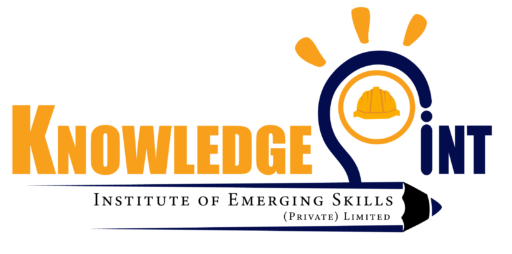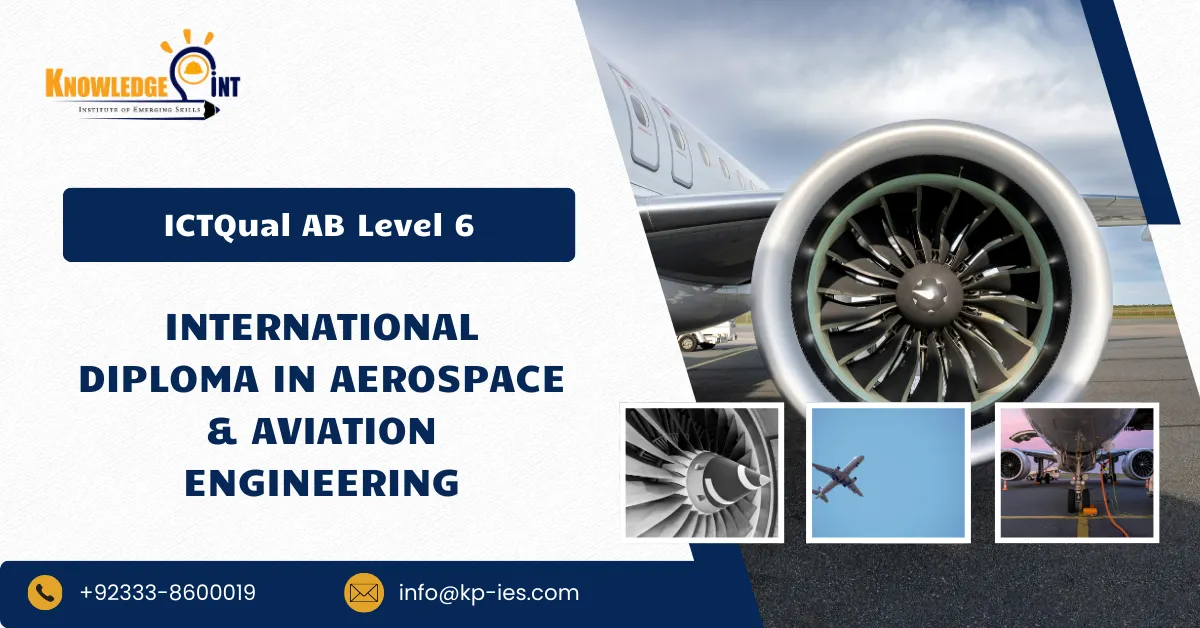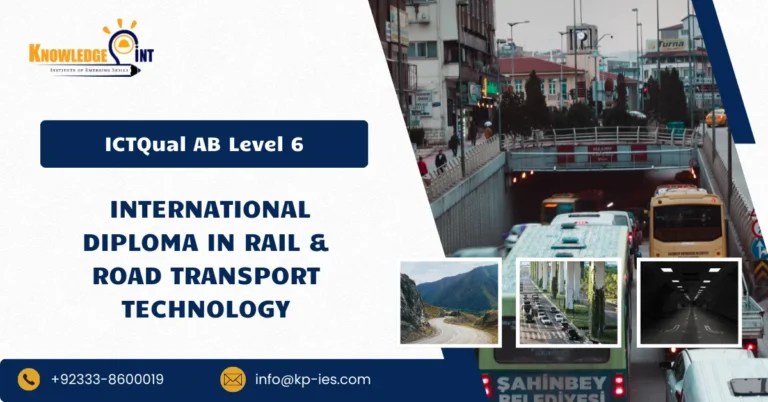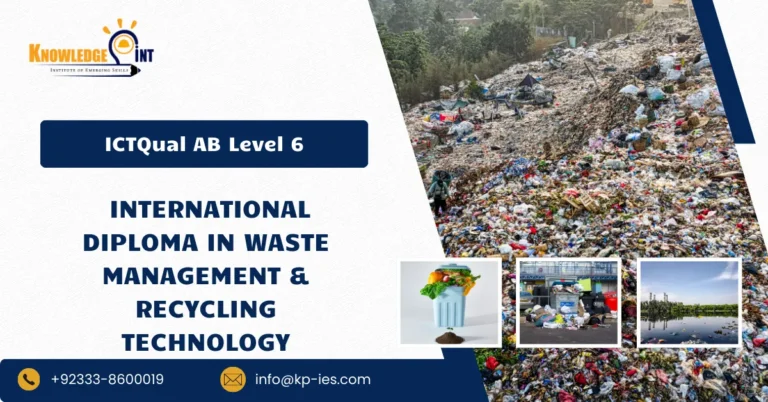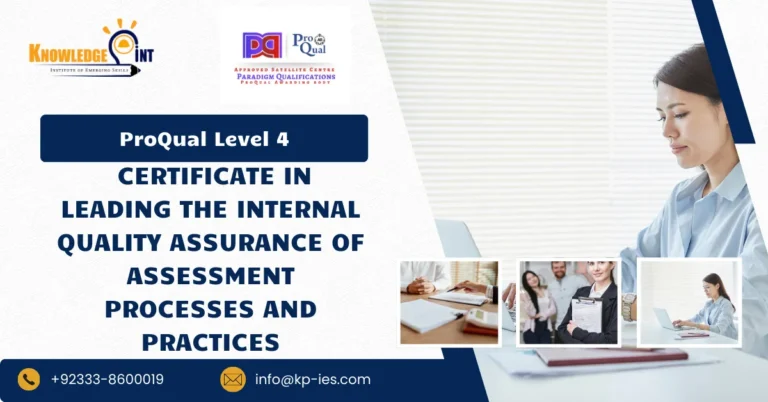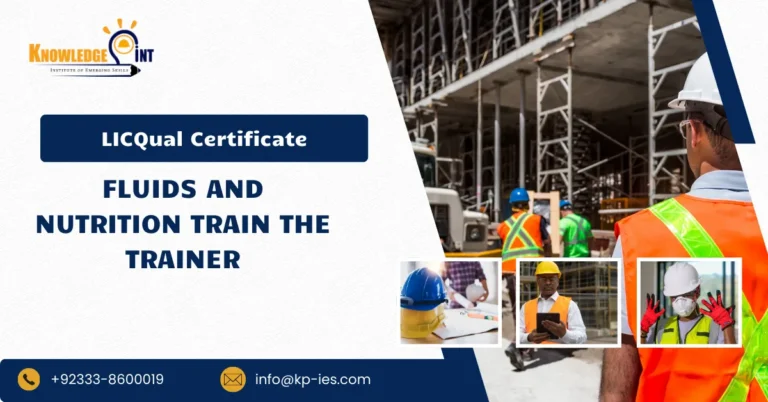The ICTQual AB Level 6 International Diploma in Aerospace & Aviation Engineering is a comprehensive three-year qualification (360 credits) designed to prepare learners for exciting and challenging careers in one of the world’s most advanced engineering sectors. This diploma equips learners with in-depth knowledge and hands-on expertise in aerodynamics, propulsion systems, flight mechanics, aircraft structures, avionics, materials science, aerospace manufacturing, and aviation safety regulations.
As the global aerospace and aviation industry continues to expand, there is a growing demand for skilled professionals capable of designing, maintaining, and improving aircraft and related technologies. This programme bridges theoretical foundations with practical applications, ensuring learners gain industry-relevant skills to meet the technological and operational challenges of modern aviation.
The course is ideal for fresh learners seeking to build a professional pathway into aerospace and aviation, as well as experienced individuals aiming to enhance or validate their technical expertise. Through structured study units, practical projects, and research-led assignments, learners develop problem-solving skills, engineering innovation, and a strong understanding of international aviation standards.
Course Overview
This qualification, the ICTQual AB Level 6 International Diploma in Aerospace & Aviation Engineering, consists of 36 mandatory units.
Year 1 – Foundation in Aerospace & Aviation Engineering
- Principles of Aerospace and Aviation Engineering
- Engineering Mathematics
- Fundamentals of Mechanical and Electrical Engineering
- Materials Science and Engineering
- Engineering Drawing and Computer-Aided Design (CAD)
- Introduction to Aerodynamics and Flight Mechanics
- Basics of Propulsion Systems
- Aircraft Structures – Fundamentals
- Avionics and Electrical Systems – Basics
- Health, Safety, and Environmental Practices in Aviation
- Communication and Technical Report Writing
- Introduction to Project Management in Engineering
Year 2 – Intermediate Studies in Aerospace & Aviation Engineering
- Aerodynamics and Fluid Dynamics – Applications
- Propulsion Systems and Gas Turbine Engines
- Aircraft Structural Analysis and Design
- Avionics and Navigation Systems
- Flight Mechanics and Performance Analysis
- Aerospace Materials and Manufacturing Processes
- Aircraft Maintenance and Reliability Engineering
- Systems Engineering in Aerospace Projects
- Unmanned Aerial Vehicles (UAV) – Fundamentals
- Sustainable Aviation and Green Technologies
- Applied Research Methods in Aerospace Engineering
- Project Planning and Aviation Operations Management
Year 3 – Advanced Studies in Aerospace & Aviation Engineering
- Advanced Aerodynamics and Computational Fluid Dynamics (CFD)
- Advanced Propulsion and Rocket Systems
- Advanced Structural Analysis and Composite Materials
- Flight Control Systems and Automation
- Space Systems Engineering and Satellite Technology
- Robotics and Autonomous Systems in Aviation
- Smart Aviation Technologies and Industry 4.0
- Aviation Safety, Risk, and Quality Management
- Cyber-Physical Systems and IoT in Aerospace Engineering
- Professional Ethics and Sustainability in Aerospace Engineering
- Innovation, Entrepreneurship, and Aviation Business Development
- Final Year Major Project (Capstone Project)
Learning Outcomes for the ICTQual AB Level 6 International Diploma in Aerospace & Aviation Engineering:
Year 1 – Foundation in Aerospace & Aviation Engineering
Principles of Aerospace and Aviation Engineering
- Understand the scope and importance of aerospace and aviation engineering.
- Identify key components of aircraft and aerospace systems.
- Explain the basic principles of flight and aviation technology.
Engineering Mathematics
- Apply algebra, trigonometry, and calculus to solve engineering problems.
- Use mathematical modelling for aerospace systems.
- Interpret engineering data through applied numerical methods.
Fundamentals of Mechanical and Electrical Engineering
- Understand the principles of mechanics, energy, and motion.
- Explain electrical fundamentals including current, voltage, and resistance.
- Apply mechanical and electrical concepts to engineering problems.
Materials Science and Engineering
- Identify aerospace materials and their properties.
- Explain the relationship between material structure and performance.
- Select appropriate materials for aircraft and aerospace applications.
Engineering Drawing and Computer-Aided Design (CAD)
- Interpret technical drawings using international standards.
- Use CAD software to design and model aerospace components.
- Apply dimensioning and tolerancing in aerospace engineering.
Introduction to Aerodynamics and Flight Mechanics
- Explain the principles of lift, drag, thrust, and weight.
- Understand airflow over wings and aircraft surfaces.
- Apply basic aerodynamic principles to flight performance.
Basics of Propulsion Systems
- Understand principles of thrust generation.
- Describe the working of jet engines and propeller systems.
- Recognise applications of propulsion in aircraft.
Aircraft Structures – Fundamentals
- Identify key elements of aircraft structural design.
- Explain stresses, loads, and deformation in structures.
- Apply basic analysis to simple aerospace structures.
Avionics and Electrical Systems – Basics
- Explain avionics and their role in aircraft systems.
- Identify electrical systems used in aviation.
- Apply basic knowledge of navigation and communication systems.
Health, Safety, and Environmental Practices in Aviation
- Understand safety regulations and aviation standards.
- Apply risk assessment and hazard identification in aviation environments.
- Explain sustainable practices in aerospace engineering.
Communication and Technical Report Writing
- Develop professional communication in an aviation context.
- Prepare structured technical and research reports.
- Apply correct referencing and documentation standards.
Introduction to Project Management in Engineering
- Understand project management principles in aerospace projects.
- Apply planning tools such as Gantt charts and timelines.
- Identify risks, costs, and resource allocation in aviation projects.
Year 2 – Intermediate Studies in Aerospace & Aviation Engineering
Aerodynamics and Fluid Dynamics – Applications
- Analyse aerodynamic performance under varying conditions.
- Apply fluid mechanics principles to aerospace systems.
- Evaluate drag reduction and aerodynamic optimisation techniques.
Propulsion Systems and Gas Turbine Engines
- Explain gas turbine principles and applications in aviation.
- Analyse thrust, efficiency, and fuel consumption.
- Apply thermodynamics to propulsion systems.
Aircraft Structural Analysis and Design
- Perform calculations on stress, strain, and deflection.
- Apply design principles for load-bearing structures.
- Evaluate materials for structural integrity.
Avionics and Navigation Systems
- Explain avionics integration in aircraft.
- Understand navigation systems including GPS and ILS.
- Apply avionics knowledge to flight operations.
Flight Mechanics and Performance Analysis
- Analyse flight performance in terms of stability and control.
- Calculate lift, drag, and aircraft range.
- Understand performance envelopes and flight limitations.
Aerospace Materials and Manufacturing Processes
- Identify modern aerospace materials including composites.
- Explain aerospace-specific manufacturing processes.
- Evaluate quality, durability, and sustainability in materials.
Aircraft Maintenance and Reliability Engineering
- Apply maintenance strategies for aerospace systems.
- Analyse reliability and performance monitoring.
- Implement preventive and predictive maintenance.
Systems Engineering in Aerospace Projects
- Understand the principles of systems engineering.
- Apply system integration methods to aerospace projects.
- Evaluate lifecycle management of aerospace systems.
Unmanned Aerial Vehicles (UAV) – Fundamentals
- Explain UAV classifications and applications.
- Understand UAV flight systems and control.
- Apply UAV regulations and safety guidelines.
Sustainable Aviation and Green Technologies
- Evaluate environmental challenges in aviation.
- Analyse fuel-efficient technologies and green propulsion.
- Apply sustainability frameworks in aerospace operations.
Applied Research Methods in Aerospace Engineering
- Develop research proposals in aerospace contexts.
- Apply quantitative and qualitative research methods.
- Interpret engineering data and present findings.
Project Planning and Aviation Operations Management
- Understand aviation operations and logistics.
- Apply project management principles in operations.
- Evaluate safety, efficiency, and cost in aviation projects.
Year 3 – Advanced Studies in Aerospace & Aviation Engineering
Advanced Aerodynamics and Computational Fluid Dynamics (CFD)
- Apply CFD techniques to simulate airflow and performance.
- Analyse turbulence and advanced aerodynamic effects.
- Evaluate aircraft design improvements using CFD.
Advanced Propulsion and Rocket Systems
- Explain rocket propulsion principles and applications.
- Analyse hybrid and advanced propulsion systems.
- Apply propulsion theory to aerospace and space systems.
Advanced Structural Analysis and Composite Materials
- Apply advanced stress analysis to complex structures.
- Evaluate the role of composites in aerospace engineering.
- Design lightweight and efficient structural components.
Flight Control Systems and Automation
- Analyse flight control principles and stability.
- Apply automation to modern aircraft systems.
- Design basic control algorithms for aviation applications.
Space Systems Engineering and Satellite Technology
- Understand space mission design principles.
- Analyse satellite systems and space communications.
- Evaluate space systems integration and applications.
Robotics and Autonomous Systems in Aviation
- Explain robotics in aerospace applications.
- Apply autonomous navigation systems in aviation.
- Evaluate UAVs and autonomous aircraft technologies.
Smart Aviation Technologies and Industry 4.0
- Understand digital transformation in aviation.
- Apply IoT and smart systems to aerospace projects.
- Analyse challenges of Industry 4.0 in aviation.
Aviation Safety, Risk, and Quality Management
- Apply risk management frameworks in aviation.
- Understand safety standards and ICAO guidelines.
- Evaluate quality assurance in aerospace projects.
Cyber-Physical Systems and IoT in Aerospace Engineering
- Explain integration of hardware, software, and communication systems.
- Apply IoT protocols in aerospace contexts.
- Design cyber-physical systems for aviation.
Professional Ethics and Sustainability in Aerospace Engineering
- Understand professional responsibilities of aerospace engineers.
- Apply sustainability frameworks to aviation projects.
- Analyse ethical issues in aerospace innovations.
Innovation, Entrepreneurship, and Aviation Business Development
- Develop entrepreneurial strategies for aerospace ventures.
- Apply innovation management in aviation projects.
- Create business models for aviation and aerospace industries.
Final Year Major Project (Capstone Project)
- Undertake independent applied aerospace research.
- Integrate multidisciplinary aerospace engineering knowledge.
- Present findings in a professional written and oral format.
Course Benefits of ICTQual AB Level 6 International Diploma in Aerospace & Aviation Engineering
- Provides in-depth knowledge of aerospace systems, aircraft design, and aviation technologies.
- Builds strong foundations in aerodynamics, propulsion, avionics, and structural analysis.
- Enhances skills in aircraft maintenance, safety management, and aviation regulations.
- Equips learners with practical expertise in CAD, simulation software, and testing methods.
- Encourages innovation in unmanned aerial vehicles (UAVs), space technology, and next-gen aircraft design.
- Strengthens understanding of airport operations, air traffic management, and logistics.
- Focuses on sustainability in aviation through green technologies and energy-efficient solutions.
- Develops leadership, teamwork, and problem-solving skills essential for the aerospace sector.
- Prepares graduates for careers in airlines, aircraft manufacturing, defense, and space research.
- Provides a global perspective, making learners competitive in the international aerospace industry.
After completing this course, learners can progress in the following ways:
- Progress to Master’s degrees in Aerospace Engineering, Aviation Management, or Aeronautical Engineering.
- Obtain professional certifications like EASA/FAA Aircraft Maintenance Licenses, PMP, or Lean Six Sigma.
- Pursue careers as Aerospace Engineer, Aircraft Design Engineer, Aviation Safety Specialist, or Aeronautical Maintenance Engineer.
- Specialize in space systems, UAV technology, propulsion engineering, or avionics systems.
- Work with leading organizations such as NASA, Boeing, Airbus, Rolls-Royce, airlines, and defense contractors.
- Engage in research and innovation in advanced flight systems, sustainable aviation, and space exploration.
- Advance into strategic leadership roles in aviation project management, aerospace manufacturing, and airline operations.
